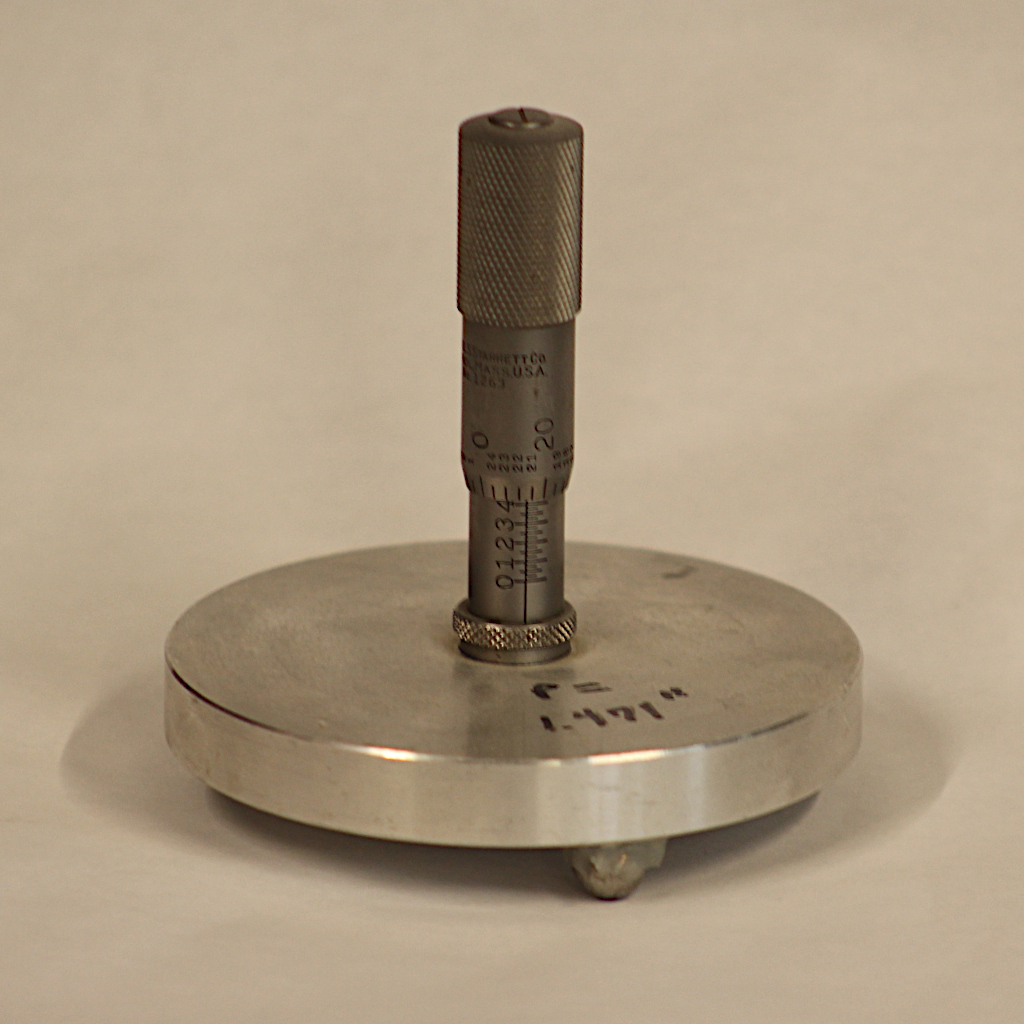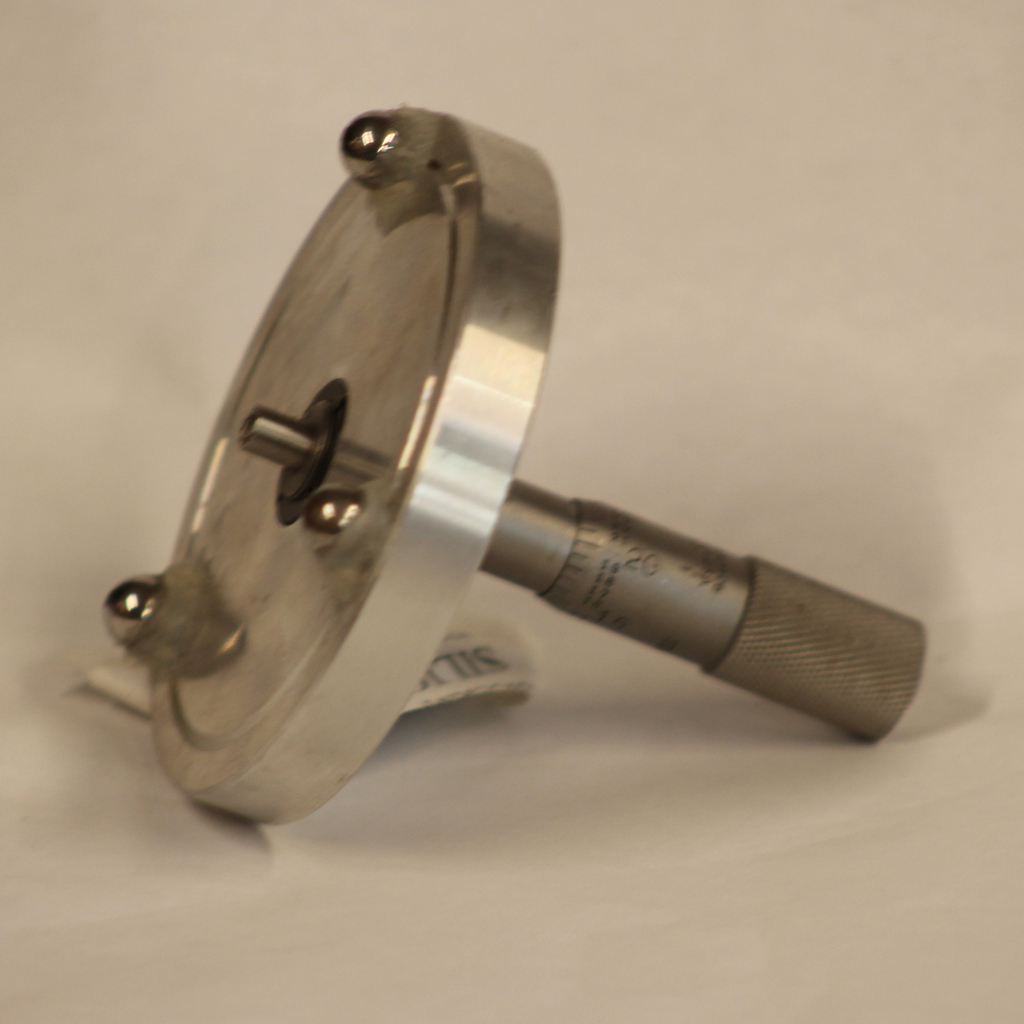Day 2, A home made spherometer


Some of you may know, I build telescopes as a hobby. Well, recently it's more like I think about building telescopes, but... well... now that I'm probably retired I am trying to get back into it a bit more. But my journey into telescope making began nearly fifty years ago when I conned my Dad into starting construction of a six inch telescope that took me some 27 years to finish. But that's a story for another day.
Today's "garage gem" does not actually live in my garage: it sits in my home office. Many of you probably don't know what it is, but the telescope makers in the crowd will recognize it as a sphereometer. This gadget can be used to determine with considerable accuracy the radius of spherical optics. What makes this one special is that mine was made with the help of my friend and mentor Paul Zurakowsky sometime in the early 1990s when I was just beginning to get back into telescope making as a member of the Chabot Telescope Maker's workshop. Sadly, Paul passed away back in 2022 and the world is a bit dimmer for his absence on planet earth.
This little spherometer began as a Starrett micrometer with a convex face, which Paul generously donated. The Chabot Telescope Makers was still at the old observatory site before it moved to the new site and became the Chabot Science Center, and we had a South Bend lathe sitting in what was probably an old shop/classroom. I had never used a lathe before, and this was my very first project machining metal. (The project is so simple, it can barely be called machining, but I was still excited to give it a try.
Paul also donated a disk of aluminum to serve as the base. The machining was quite simple: turn down the disk, face it flat, and then center bore it to hold the micrometer. Then, I cut a V shaped grove, concentric with the center bore. These will hold a series of "feet" made from ball bearings, which are pretty precisely manufactured to contact the mirror. You begin by "zeroing" the micrometer against a known flat. You then place the mirror on the test optic. The three feet will then rest on the optic, and you measure the deviation of the mirror from flat using the micrometer. You can then either do some math to solve for the radius. In the old days, we had a similar model that Paul had printed a chart for that you could simply read off the radius directly. I'm not sure that I ever did that for this one: the math isn't that complex, especially if you have a calculator. Now we have an automated spherometer at the workshop, which has a small microcontroller and a tiny LED display that will read off the focal length and focal ratio directly.
But the old school methods still work. I used this to help with the rough grinding on my (as yet uncompleted) 12.5" telescope. And it reminds me of my good friend, and all the fun times I had (and continue to have in retirement) at the Chabot Telescope Makers Workshop.
Hope you all are having a good day.